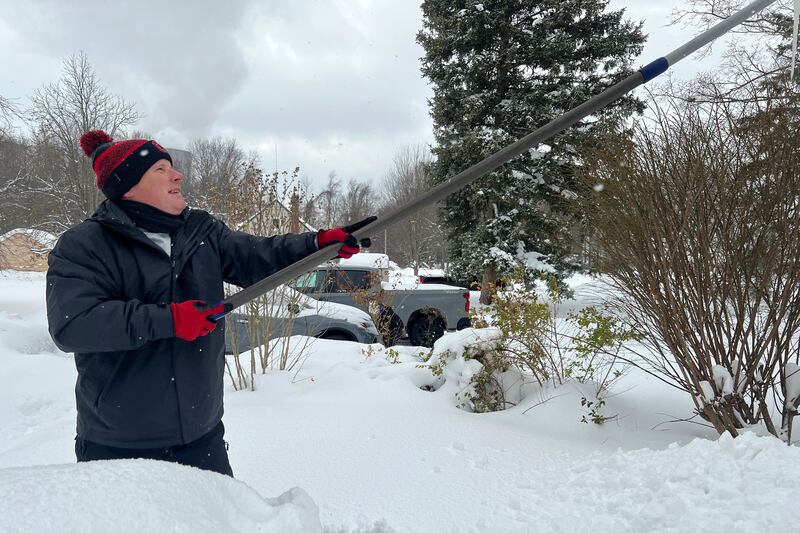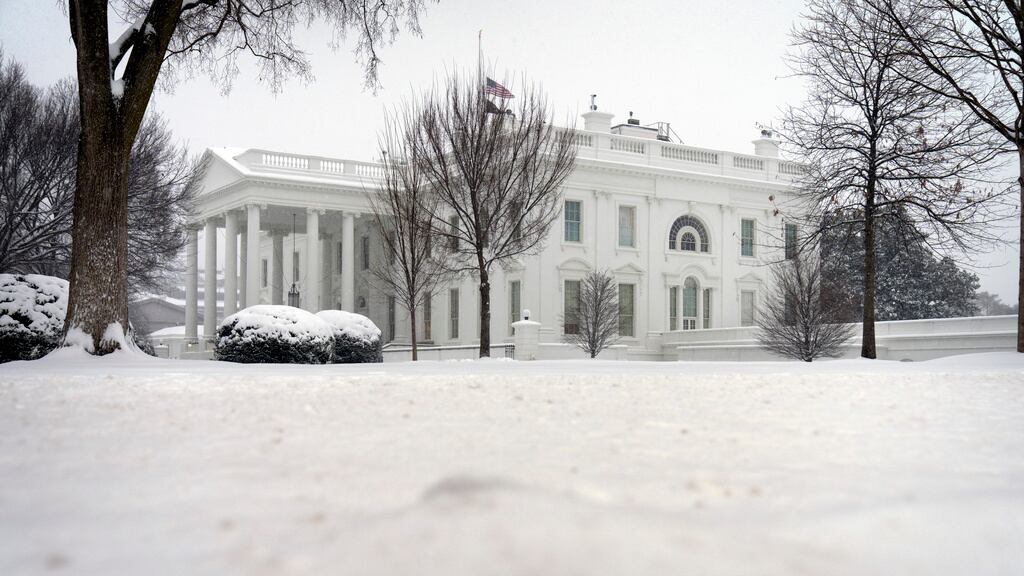The winter storm in the United States has already claimed four lives in Kansas, Missouri, and Virginia, while extremely low temperatures continue to threaten other states with thick layers of ice covering the streets and icy winds, prompting citizens to take precautions. It is “the largest snowfall in a decade,” according to the National Weather Service (NWS).
The Associated Press (AP) reported that the four deceased individuals were due to traffic accidents caused by the difficult road conditions due to bad weather.
PUBLICIDAD
One of the dead was in Sussex, Virginia, and it was a man who crashed the car he was driving into a tree. In Sedwick County, Kansas, two people died this Sunday who were traveling in a van that overturned. This Monday, another citizen died in an accident while driving his vehicle.
The winter storm in the United States is classified as dangerous, as it not only covers roads with ice, but also affects visibility with wind gusts of up to 48 kilometers per hour in southern regions like Macomb, Lincoln, and Danville. In addition to this, there is a risk of hypothermia if proper care is not taken.

In Chicago, temperatures were recorded below zero, and across Texas, wind chills range between 20 °F and 5 °F. New York is experiencing heavy snowfall, prompting the NWS to warn of cold temperatures reaching “dangerous” levels.
"The system will produce between 6 and 12 inches of snow in the Mid-Atlantic region, including the Washington DC metropolitan area," NWS stated, as reported by AP.
In Pennsylvania, snow accumulations of between 10 and 15 centimeters have been recorded. Even in the northeast and north of Florida, where it is unusual to have low temperatures, they have been affected with temperatures of 31 °F and wind chill temperatures of up to 22 °F, as reported by AFP.
"In Indiana 'it is snowing so heavily that snowplows pass and in half an hour the roads are completely covered again,' said Sergeant Todd Ringle in the AFP report."
How to take care of yourself during a winter storm?
A winter storm is dangerous. The greatest danger is outside, but this means that being at home or in the office is safe. It is necessary to take care by taking all possible precautions wherever you are.
Outside, there are risks of accidents, as the streets are often impassable due to layers of ice, and visibility can be affected by the wind. In addition, there is the risk of hypothermia. Inside, it can also be risky due to the low temperatures, electricity may fail which will make heating difficult, and there may be a risk of fire for those trying to warm up with stoves, firewood, and other methods.
The Centers for Disease Control and Prevention (CDC) advises not to go outside unless necessary. On their website, this organization provides several recommendations, which we will outline below:
AT HOME
- If you are at home, wear warm winter clothing and gloves to protect your hands.
- Close the doors and windows properly.
- Only use chimneys, wood stoves, or other combustion heaters if they have an adequate ventilation system to the outside and do not have gas leaks into indoor spaces.
- Do not burn paper in a fireplace.
- Keep heat sources such as space heaters at least 3 feet away from curtains, furniture, or bedding. Never cover the space heater.
- Never place a space heater on top of furniture or near water.
- Avoid using extensions to plug in the heater.
- If there is a power outage, do not use candles, but flashlights or battery-powered lanterns to avoid a fire.
- Babies should not sleep in cold rooms because they lose body heat more easily than adults, nor should the elderly.
- If the pipes freeze, do not thaw them with fire. Thaw the pipes slowly with the hot air from a hairdryer.
- Be well nourished because that will keep you warm, consume broths and other hot beverages.
OUT OF HOME
- Only go out if it is absolutely necessary.
- Don’t walk on the ice.
- Do not leave your skin exposed.
- While driving, keep the radio on to know the weather reports and areas you should avoid.
- If you have to travel by car, use tire chains and bring your cellphone.
- Do not travel if there is no visibility
- Never pour water on your windshield to remove ice or snow as it could break.
- Before heading out, check the emergency winter supplies in your car and replenish them if necessary.
- If you have to travel by car, use chains on the tires and bring your cell phone.
For more information on winter storm care, visit the CDC website by clicking HERE
